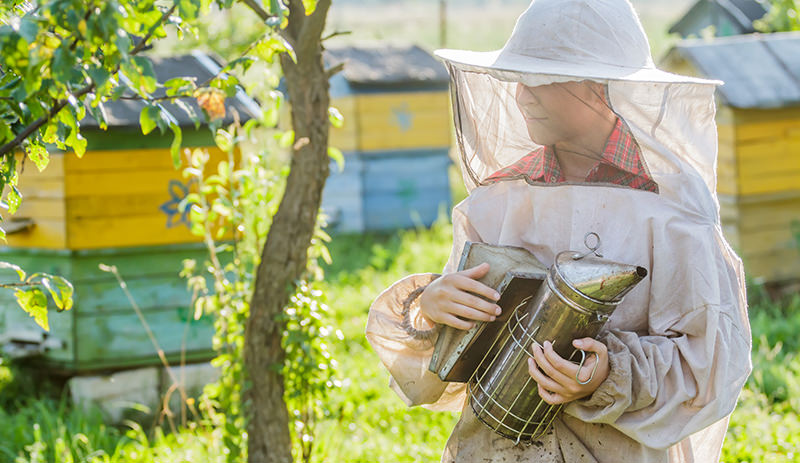
In 2010, I met a 6-year-old girl who had taken her family’s beekeeping business and turned it into a hobby of her own. Her father manufactured Langstroth equipment from locally milled pine and, at seeing her daughter’s interest in the family business, created a miniature Langstroth hive, just for her. It met the same requirements of bee space and had fewer frames per super. The small size made it easier for her to inspect her own colonies—they were usually nucs, because of the small size of the hives—and harvest her own honey from natural comb. She then bottled and sold her honey and turned leftover wax into chapstick. She designed her own labels for each of her products, and when the family went to market, her honey always sold out first.
You’re likely interested in honeybees or already enjoy the hobby with your own hives. You likely know the risks associated with beekeeping and take necessary precautions. It’s a bit different with children, but not much. If you’re a beekeeper and a parent, or a mentor taking on a young apprentice with parental permission, there are a few things to cover first.
1. Confirm There is No Allergy
Some people have severe and true allergies to bee stings that result in anaphylaxis, characterized by the throat feeling like it is closing, and can be extremely dangerous. Others have “hyper-sensitivities,” which mean a sting will cause significant discomfort, perhaps extreme swelling, hives, rash or other reactions at or near the site of the sting.
These two reactions are not the same, and extreme swelling or redness does not mean a person is allergic to bees, so i’s important to know the distinction. With children, as with yourself, you will want to confirm that the child does not have an allergic reaction to bees before beginning the hobby. This is good common sense. Note that honeybee venom is different than the venom of other bees or wasps—talk to your allergist for guidance.
2. Wear Protective Gear—All Of It
Child beekeepers are not entirely unheard of—so much so that beekeeping supply companies make child-sized suits, jackets, veils and gloves. Set and establish ground rules about the clothes worn during beekeeping activities, and make sure you and your children are in agreement before starting.
3. Educate Your Young Charge
Before diving into the hive and digging through frames, every budding beekeeping should be well-versed on the behavior, lifecycle, colony structure and habits of the honeybee. This may mean reading literature and discussing the honeybee before starting.
4. Model Good Beekeeping Behavior
The world needs more beekeepers, especially ones who are conscientious and respectful. Your child, young charge or young apprentice will be looking to you and watching you carefully. They will be learning from you first and foremost how to treat bees and how to move around them. Model good beekeeping practices. The future of the beekeeping world depends on what you teach the next generation.
Not every child will be interested in keeping bees, and that’s OK. Some are drawn to the hobby, will enjoy learning the process and may even turn it into their full-time profession one day. Whether you are a parent or a beekeeping mentor, take your cues from your child and listen to them. They may be small, but children often have wonderful intuition, especially about honeybees.




